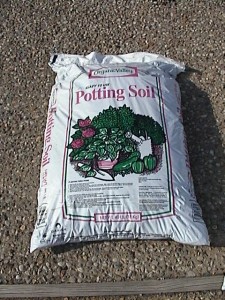Before you plant, take these three steps to prepare the soil and your garden will reward you all season.
Just like you and I, your garden needs to breathe – the soil as well as the plants. Tilling and aeration keep the soil loose, allowing for air and drainage near plant roots. An added bonus: if you take the time to prepare the soil and make it healthy, the odds favor a more bountiful harvest and healthy, robust plants. That means less pest control, fertilizing and plant loss for you.
Till
The first step is tilling your soil. This means breaking it up, and aerating it so it can breathe. When a farmer plows the field, this means tilling the soil in preparation for planting. Mark out if you want rows or a large patch.
In a small flower patch, you can do this with a spade, by digging and turning over the soil until loosened. For larger gardens, a mechanical gas powered tiller is best. Home improvement centers and garden centers often rent these out by the half day. Tillers come as front tine, mid-tine or rear tine, which refers to where the rotary blade is positioned.
Tip: the rear tine works best for large areas because it pulls you along, vs. you pushing it along. They can be powerful, so if you are on the small side, you may want some help. Ask the clerk what types they have, and which suits your needs.
Nourish
Soil cannot nourish plants unless it also receives nutrients. And the soil and plants must rest from the activity of growth. Adding a layer of compost, manure or blood and bone meal to your soil as you till ensures healthy soil throughout the growing season. This gives your garden a great foundation to begin from, and supports your garden for months to come. Some of the more common garden applications are listed below. This is not a complete list by any means, but a good start:
- Begin with a rich soil base. If your soil is tired, or to much like clay, consider adding potting soil or topsoil to get started. Most local agriculture departments will test your soil for a nominal fee, and give great advice on how to improve soil quality.
- Compost consists of biodegradable waste, typically garden scraps, manure and food scraps. It is frequently mixed with other mediums like soil, sand and manure.
- Manure for gardens can mean two things: green manure, which is typically a cover crop grown specifically to plow under and add plant nutrients like nitrogen. Clover is a typical cover crop.
- Animal manure was probably your first guess. It is, as suspected: poop. Most commercial manures are baked to reduce the possibility of pathogens – ask your nursery for details of what they carry. Even baked, most manures will smell up the yard for a few days. You can cut down on the odor by covering with a layer of topsoil. I was surprised to learn that manure often contains antibiotics and hormones, since the animals producing the manure often are treated regularly with antibiotics. A study done at the University of Minnesota in 2007 shows some plants grown in manure rich soil also contained traces of antibiotics.
- Fish emulsion adds valuable micro-nutrients to soil, and originates from the fish remains of industrial processing. Great stuff: but it does smell!
- Blood and bone meal is exactly what it sounds like. The meal is ground up and sold in bulk or bags. It will last through 2-3 months, and stand up well to heat – longer than fish emulsion will. For a short growing season, one application is usually enough. Check with your local nursery to see what your climate zone requires.
- Peat adds moisture and nutrients to soil as well. Also called “peat moss”, this additive comes from decayed plant matter and helps soil retain moisture throughout a growing season. It is also used as fuel in some parts of the world, as dried peat burns slowly.
- Roses love a loamy soil, and if you have plans for roses, you may want to take special care for them. Loam consists of sand, silt and clay.
For tips on saving cash, see this earlier article: Tips for saving cash on organic compost and manure
